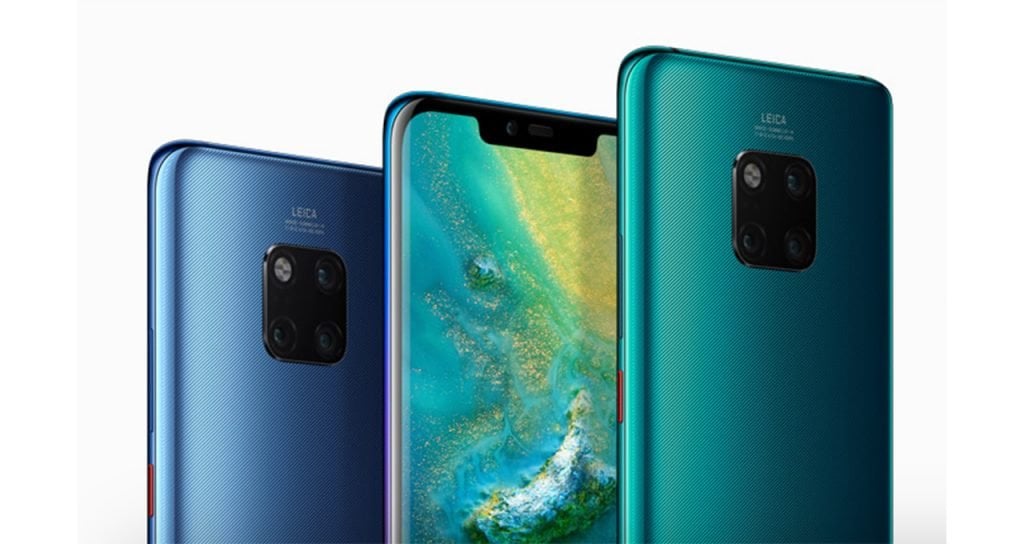Huawei may not be doing well in the U.S. due to political tensions with China, but that’s enabling Huawei and other major Chinese smartphone makers to perform well in other markets, particularly in Europe, where they are crushing rivals like Apple and Samsung.
Chinese smartphone makers rule Europe
Several major Chinese smartphone makers, including Huawei, have been able to increase their market shares in Europe. This increase in demand for Chinese phones sounds even more impressive when you consider that Europe’s overall market for smartphones is shrinking. The European smartphone market shrunk 4% in 2018, while in the fourth quarter, shipments dropped 2%.
Due to the trade tensions with the U.S., Chinese companies reportedly shifted their focus to Europe. For instance, Huawei and Oppo hosted massive launch events in Paris. Xiaomi and OnePlus also expanded their reach in Europe.
According to the latest numbers from the research firm Canalys, Chinese smartphone makers accounted for 32% or nearly one-third of smartphone shipments in Europe in 2018, an increase of 27% from 2017. Huawei with its 23% market share (an increase of 54%) in the last quarter of 2018 emerged as the most popular Chinese smartphone maker in Europe.
Despite the rapid increase in smartphone sales, Huawei’s international reputation is being tarnished. Since Washington’s claim that Huawei’s equipment could be used by the Chinese government to spy on citizens of other nations, many countries are considering placing restrictions on the company’s 5G network equipment.
Australia and New Zealand have already blocked the Chinese company from supplying equipment for 5G network infrastructure within their borders. Huawei denies all such allegations, saying its products do not pose national security risks.
How U.S. opposition helped Huawei
Huawei lately has faced backlash from U.S. intelligence agencies, resulting in resistance from local carriers and lawmakers. This weakened the company’s prospects in the U.S. but enabled it to boost its performance in European markets. According to Canalys Senior Analyst Ben Stanton, the political tensions between the U.S. and China have benefited European consumers.
“The US administration is causing Chinese companies to invest in Europe over the US,” the analyst said.
Further, Stanton notes that even though European markets are mature and have slow replacement rates, there is an opportunity for Chinese smartphone makers to “displace the market incumbents.” Chinese phones have price advantages, and they are using them “against the smaller brands in Europe.”
Meanwhile, other major smartphone makers are facing a downturn in Europe. For instance, Samsung’s shipments dropped 10% in 2018 from 2017. Apple registered a drop of 6%. Canalys estimates that Apple shipped 42.8 million iPhones in Europe last year, which was only marginally ahead of Huawei’s 42.5 million devices. If the same trend continues, Huawei could overtake Apple this year to grab the second spot. Currently Samsung and Apple hold the top two positions in Europe, capturing 28.6% and 26% of the market, respectively.
In addition to the political tensions between China and the U.S., Canalys adds that the weak performance of high-end phones is also affecting Europe’s smartphone landscape. The Canalys analyst said the lack of innovation is discouraging customers from upgrading. However, a “transformation in the mid-range segment in 2018, with notch displays and dual cameras coming down to aggressive price points,” is increasing demand for Chinese phones, the firm adds.
Chinese phones beating Samsung and iPhones
Chinese smartphone makers are also overtaking global brands in other major markets as well. For example, in Thailand, the largest smartphone market in Southeast Asia, Oppo overtook Samsung to become the top vendor. The Chinese company shipped 1.1 million units to grab a 22.2% market share.
Huawei and Vivo captured 13.1% and 12.7% of the market, respectively, to reserve places in the top five. Apple came in fifth. Overall Thailand also witnessed a drop in smartphone shipments in the fourth quarter of 2018. This was its second drop, with the first one being in the third quarter.
A similar story is occurring in India as well, where Xiaomi is emerging as the top smartphone brand. In China, Huawei sold 30 million phones in the last quarter of 2018, or about three times more than Apple, according to data from Canalys.












